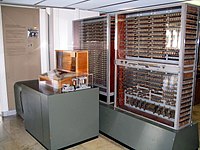Floating point arithmetic

Okay, imagine you have some numbers that you want to work with, like 3.14 and 2.718. These are called floating-point numbers because the decimal point can "float" around to different positions in the number.
When we do math with these numbers on a computer, we use something called floating-point arithmetic. This means that the computer stores the numbers in a specific way, with a certain number of bits to represent the digits before and after the decimal point.
Think of it like building with Legos. Each number is represented by a certain number of Lego bricks, and the computer uses these bricks to store and work with the numbers.
But sometimes, when we do calculations with floating-point numbers, there can be small errors because the computer has a limited number of Lego bricks to use. This can lead to tiny inaccuracies in the results of our calculations.
So, floating-point arithmetic is a way for computers to handle numbers with decimal points, but we have to be careful because it can sometimes give us slightly wrong answers.
When we do math with these numbers on a computer, we use something called floating-point arithmetic. This means that the computer stores the numbers in a specific way, with a certain number of bits to represent the digits before and after the decimal point.
Think of it like building with Legos. Each number is represented by a certain number of Lego bricks, and the computer uses these bricks to store and work with the numbers.
But sometimes, when we do calculations with floating-point numbers, there can be small errors because the computer has a limited number of Lego bricks to use. This can lead to tiny inaccuracies in the results of our calculations.
So, floating-point arithmetic is a way for computers to handle numbers with decimal points, but we have to be careful because it can sometimes give us slightly wrong answers.
Related topics others have asked about:
